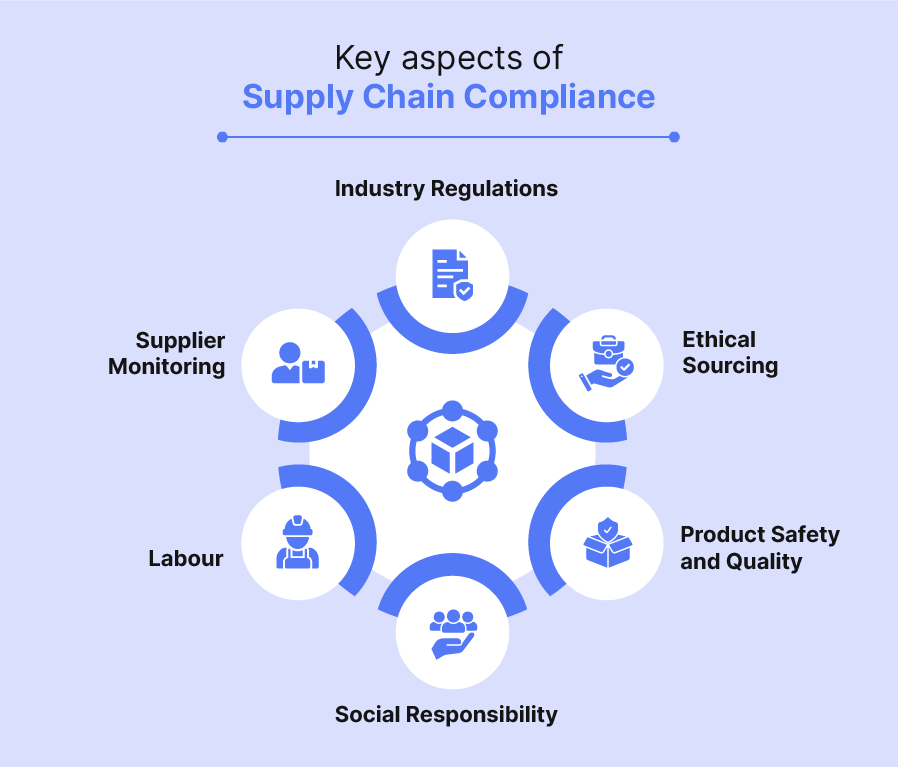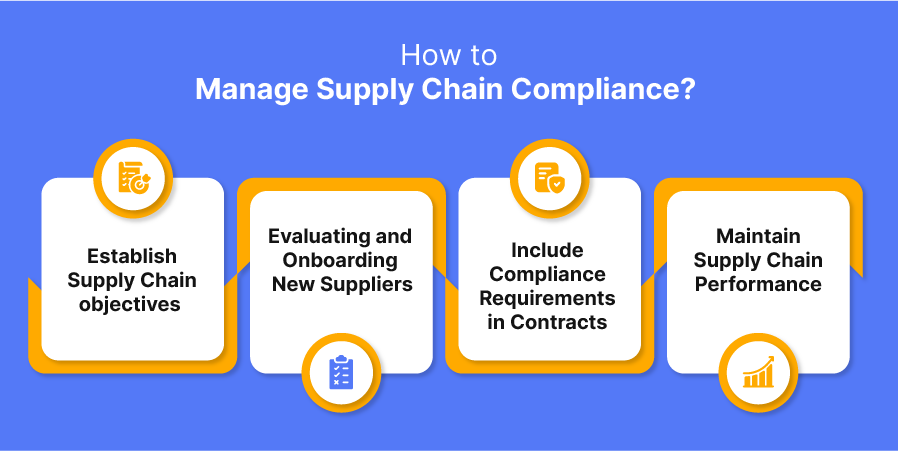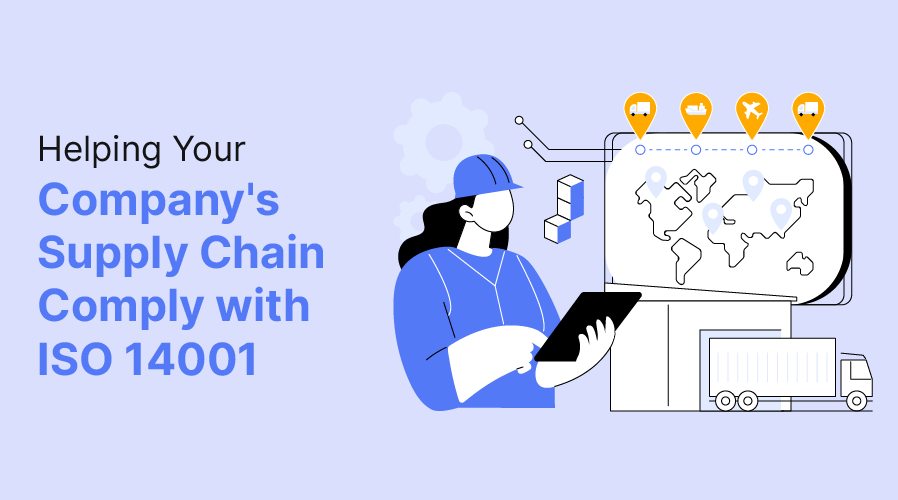ISO 14001 is an internationally recognised framework for environmental management systems (EMS), defining guidelines for organisations to establish, implement, maintain, and improve environmental performance. By integrating ISO 14001 into supply chain management practices, companies can streamline operations, minimise risks, and enhance product quality management.
However, all the benefits of ensuring ISO 14001 compliance cannot be realised if your business's supply chain doesn't follow environmentally good practices to reduce their impact. An adequate supply chain management system is essential for any company, as well as the supply chain, to aim for sustainability and regulatory compliance.
So, how do you ensure that your supply chain's performance and behavior don't impact the environment negatively? Let's understand.
Supply Chain and Its Impact on the Environment
As per ISO 14001, an organisation must consider its supplier's environmental performance and practices. The supply chain in industries must meet the relevant industry standards and regulations throughout their operations - from sourcing raw materials to offering goods and services to customers.
While the responsibility of ensuring supply chain compliance is with the organisation, the standard doesn't specify which goals or objectives should be achieved. As a result, businesses can define their own processes to ensure the integrity of the supply chain and maintain compliance.
The key aspects of ensuring that your supply chain is compliant with ISO 14001 include-

-
Industry regulations: Compliance with environmental standards and regulations throughout supplier management to minimise environmental impact, reduce waste management, and promote sustainable practices.
-
Ethical sourcing: Ensuring that all the raw materials are sourced ethically and do not promote any social injustice, illegal practices, or environmental harm.
-
Product safety and quality: Making sure that products and services are produced according to industry regulations and meet quality standards for the highest customer satisfaction.
-
Labour: Ensuring that all the labour laws are ethically followed, both internally and externally, in the organisation. This includes offering safe working conditions, fair wages, and reasonable working hours and eliminating child labour or forced labour.
-
Social responsibility: Engaging in social responsibility practices to demonstrate a commitment towards environmental sustainability and support the welfare of those impacted by the supply chain.
-
Supplier monitoring: Defining policies to monitor and assess suppliers regularly to identify any areas for improvement and maintain compliance.
How to Manage Supply Chain Compliance?
Here's how you can ensure ISO 14001 compliance with a robust supply chain management system-

1. Establish supply chain objectives
Depending on the nature, size, and needs of your business, you might have various environmental objectives and considerations. Perhaps you want to reduce your carbon footprint by minimising emissions or ensuring ethical sourcing of the raw material.
Here, work closely with suppliers to ensure they understand your objectives and comply with ISO 14001 requirements. In addition, ask the suppliers to identify and quantify their own environmental aspects. Establishing clear expectations regarding environmental performance and providing support and resources will help ensure everyone is on the same page and the standards are clearly met.
2. Evaluating and onboarding new suppliers
When onboarding new suppliers, evaluate their environmental objectives and performance. Determine how the supplier's environmental profile matches with yours, and identify threats and opportunities that can impact the business.
Further, KPIs can be established so that the supplier can evaluate the results at agreed-upon intervals. Introducing automation to your supply chain management system will not only help you assess performance but also establish control over the environmental impacts of your supply chain. It is always good practice to let your own environmental team review these results.
Once you have measures and objective visibility of your supplier's environmental performance, you can start working on maintaining and improving it.
3. Include compliance requirements in contracts
It is also a great practice to incorporate environmental requirements into supplier contracts and agreements. This may include provisions related to waste reduction, recycling, and the use of eco-friendly materials and processes, along with adherence to labour laws. This will help organisations ensure the integrity of the supply chain and maintain quality.
Additionally, businesses can also partner with suppliers to identify opportunities for joint environmental initiatives. This could involve sharing best practices, implementing pollution prevention measures, or jointly investing in sustainable technologies.
4. Maintain supply chain performance
Effective supply chain management isn't only important for ISO 14001 compliance but is also a critical aspect of ensuring the highest quality and compliance with ISO 9001 standards. Within ISO 9001, the "plan-do-act-check" cycle and continual improvement are crucial concepts that can help you monitor the performance of your supply chain.
You can do this by monitoring and analysing the key results and keeping track of the supplier's environmental aspects, which will also help you suggest actions for improvement. It is also important to document the suggested changes, monitor their implementation, and measure how the performance changes.
Implement mechanisms to ensure that suppliers have established internal processes to identify and mitigate risks and can drive documented corrective actions when needed.
In Conclusion
Managing supply chain compliance with ISO 14001 is essential for companies seeking to achieve environmental sustainability, regulatory compliance, and long-term business success. If your supply chain is not ISO 14001 accredited yet, communicate the benefits of doing so for the business, its stakeholders, and the environment.
By integrating ISO 14001 principles into supply chain management practices, companies can minimise environmental risks, reduce costs, enhance their reputation, and access new markets and business opportunities. Through collaboration with suppliers, implementation of monitoring and verification mechanisms, and investment in sustainable supply chain management systems, companies can achieve significant improvements in environmental performance across the entire supply chain.



























